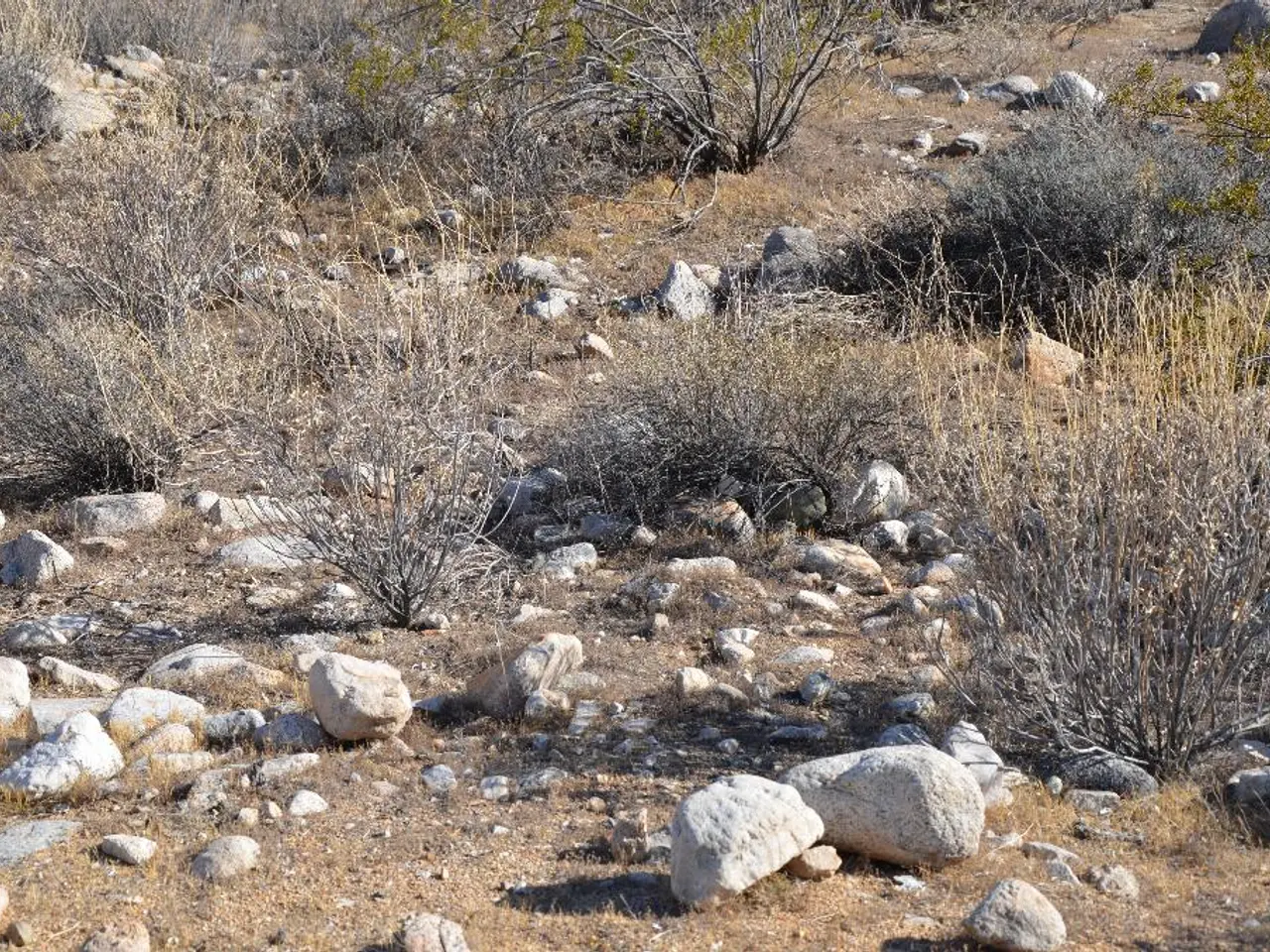Zeb Page, the individual in question
In the realm of geoscience, Dr. Zeb Page's research stands out for its focus on high-pressure metamorphic rocks, particularly eclogite. These rocks, formed at great depths and pressures, provide valuable insights into the Earth's subduction zones.
Eclogite, a high-pressure metamorphic rock, is primarily composed of omphacite (a Na-rich clinopyroxene) and garnet. It forms under pressures greater than 1.2 GPa (about 40–100 km depth) and temperatures ranging from about 500 to 1000°C, often in subduction zones.
Dr. Page's research delves into understanding the pressure-temperature (P-T) conditions, time, fluid histories, and the diffusion of oxygen through zircon and garnet in eclogite.
### P-T Conditions and Methods of Study
Eclogite commonly records P-T conditions ranging from 1.2 to 3.0 GPa (depths of 40–100 km) and 500–1000°C. Ultrahigh-pressure eclogites (>2.8 GPa) are known from a few localities worldwide. P-T estimates are made using thermodynamic modeling of garnet–clinopyroxene equilibria, phase equilibria modeling, and thermobarometry (e.g., Fe-Mg exchange, inclusion thermobarometry).
### Time and Geochronology
Dating eclogite facies events is typically done via Lu-Hf (garnet), Sm-Nd (garnet, clinopyroxene), and U-Pb (zircon, rutile) geochronology. The duration of HP/UHP metamorphism ranges from a few million years (short-lived subduction events) to over 30 Myr (long-lived orogens). Diffusion chronometry in garnet and zircon provides insight into the durations of specific segments of metamorphic paths.
### Fluid Histories
Fluids in eclogite facies are generally rare, but hydrous phases can preserve evidence of fluid infiltration. Eclogitization involves fluid-assisted recrystallization, with isotopic and trace element evidence indicating local and/or external fluid sources.
### Diffusion of Oxygen Through Zircon and Garnet
Zircon and garnet are often used for geochronology and thermometry due to their resistance to diffusion and thermal resetting. Oxygen diffusion in zircon is extremely slow at eclogite-facies temperatures, preserving primary δ18O values and supporting the use of zircon for thermometry and provenance studies. Oxygen diffusion in garnet is faster but still slow at typical eclogite-facies temperatures, making it retentive over geological timescales unless heated above 800°C for extended periods.
Recent experimental and natural studies, such as those by Dr. Page and his colleagues, have refined diffusion models, allowing for more accurate extraction of thermal histories. Oxygen isotope zoning in garnet and zircon, combined with diffusion modeling, can reveal thermal and fluid histories, including the timing and sources of fluid infiltration during HP metamorphism.
For a more detailed understanding of Dr. Page's research and specific case studies on particular localities, refer to his publications in journals like *Contributions to Mineralogy and Petrology*, *Geochimica et Cosmochimica Acta*, and *Earth and Planetary Science Letters*.
For those interested in learning more about mineralogy and optical crystallography, Dr. Page teaches GEOS 201: Mineralogy & Optical Crystallography. More information about his research can be found on his webpage.
Eclogite, a high-pressure metamorphic rock of interest to environmental science, offers valuable data regarding climate-change through its insights into the Earth's subduction zones. Dr. Page's research, focusing on pressure-temperature conditions, fluid histories, and the diffusion of oxygen through zircon and garnet in eclogite, encompasses data-and-cloud-computing and technology through the use of thermodynamic modeling and diffusion chronometry.




